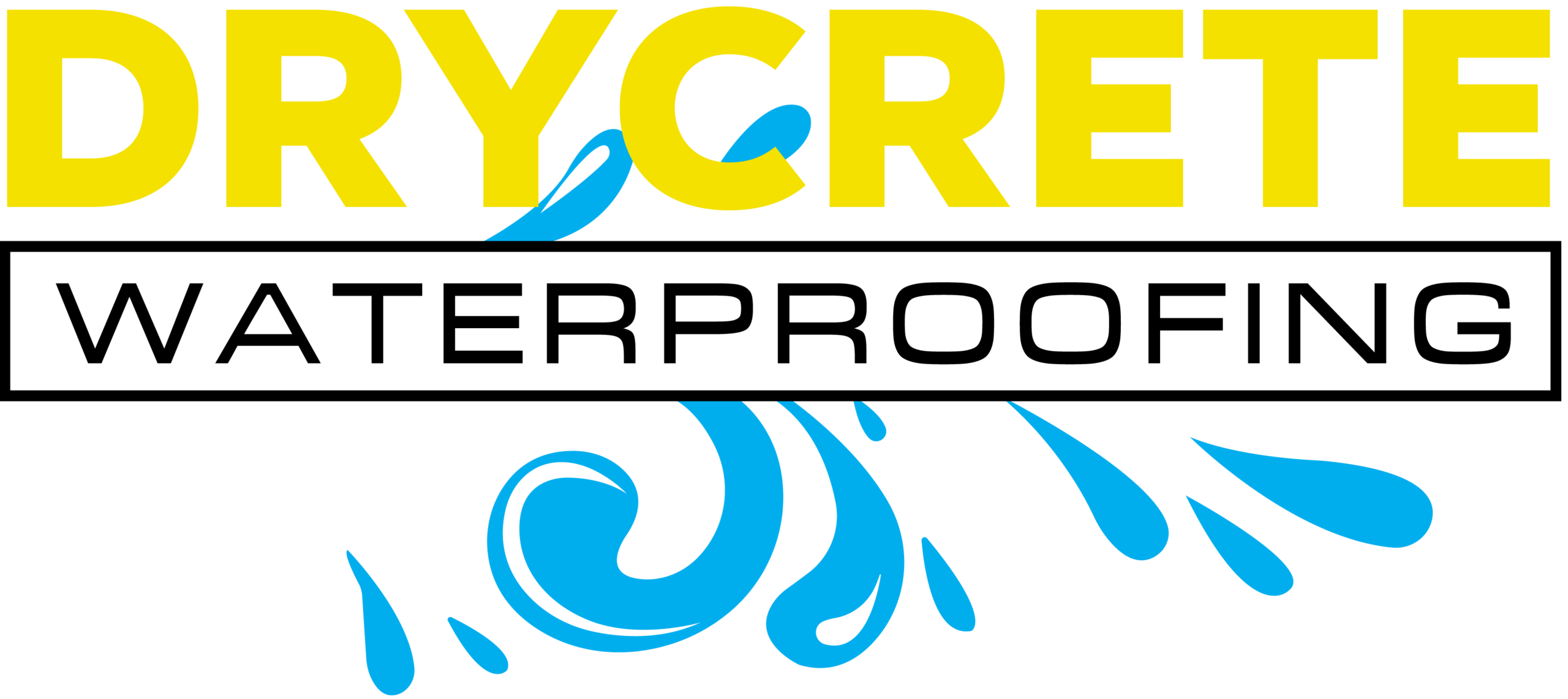If you have a basement leak both interior basement crack repair and exterior basement crack repair are viable methods of fixing your foundation cracks. In many instances repairing a crack from the inside will be the preferred option. This is because interior foundation repair is faster, cheaper, and often just as effective. However, there are some cases where exterior crack repair is the preferred or only option for your home.
Understanding Basement Cracks:
Vertical cracks in your basement walls are common and often nothing to worry about. However, if not repaired foundation cracks can deteriorate and cause further damage to the structure of your home. So it is important to repair basement wall cracks as you notice them.
What Causes Basement Wall Cracks?
- Foundation Settling: When the ground beneath a building’s foundation shifts or settles unevenly it can cause the foundation to crack.
- Hydrostatic Pressure: When water gets trapped on the outside of your basement walls with no ability to drain, it causes pressure to build. This hydrostatic pressure can cause cracks in your home’s foundation.
- Freezing and Thawing: Our customers here in Eastern, MA and Rhode Island also must contend with the changing seasons. When cracks form, water seeps into the void, and during the seasons that water freezes and thaws causing micro movements in your foundation. This will worsen cracks over time.
What Happens If You Don’t Repair Cracks in Your Basement Walls?
There are a variety of consequences that will occur if you decide not to repair your foundation cracks, including:
- Basement leaks: Water will leak in through the smallest void in your foundation wall and trail down to your concrete slab.
- Structural damage: Your basement walls are the very structure your home sits on. Deterioration of cracks over time can compromise that structural integrity.
- Mold growth: Mold and mildew grow in moist and humid conditions. This is a major health concern as decreased air quality can lead to respiratory and allergy issues.
- More extensive and costly repairs: As the crack becomes large and the structural integrity becomes more of a concern the price tag on repairs begins to rise.
- Decreased property value: If you plan to sell your home, leaky basement cracks will decrease the value and scare off potential buyers.
- Pest infestation: Cracks in your foundation create entry points for pests and attract cockroaches, silverfish and centipedes as they like moist humid conditions.
Repairing Basement Cracks from the Inside:
So how exactly do you repair a crack from the inside? At Drycrete Waterproofing, interior foundation crack repair is our preferred method of repairing cracks as it saves our customers time and money. We’re so confident in the method that we offer a 10-year warranty. We follow a simple process:
- Prep the crack by chipping out the edge, widening the void.
- Clean out the void with a razor to remove any small particles that might affect adhesion.
- Drill port holes into the crack from top to bottom 10 inches apart.
- Hammer ports into the holes
- Add a hydraulic cement backer and let that cure.
- Then we pump a flexible resin into the crack from bottom to top.
Some companies will use epoxy to fill the void, but flexible resin is a better option as it can flex with the micro movements in your basement walls maintaining a water-tight seal. Epoxy cures rock hard and will crack overtime due to those movements in your foundation wall.
Advantages of Interior Basement Crack Repair:
- Less expensive
- Faster repair
- Less invasive
- Can be done all year long and in any weather
- No damage to landscaping
Disadvantages of Interior Basement Crack Repair
- Crack repair from the interior works well for poured concrete foundations but is not the best option for cinderblock or fieldstone foundation walls.
- If your basement is finished you will need to demo a section of your wall to gain access to the crack.
- May not be an option on some hard to reach places like near chimneys or behind pipes and electrical panels.
- Aesthetic concerns
Repairing Basement Cracks from the Outside:
Although interior crack repair is the preferred method of repairing a crack in your basement wall, in some cases exterior crack repair is the only or preferred method of repair. The method looks quite a bit different than an interior repair.
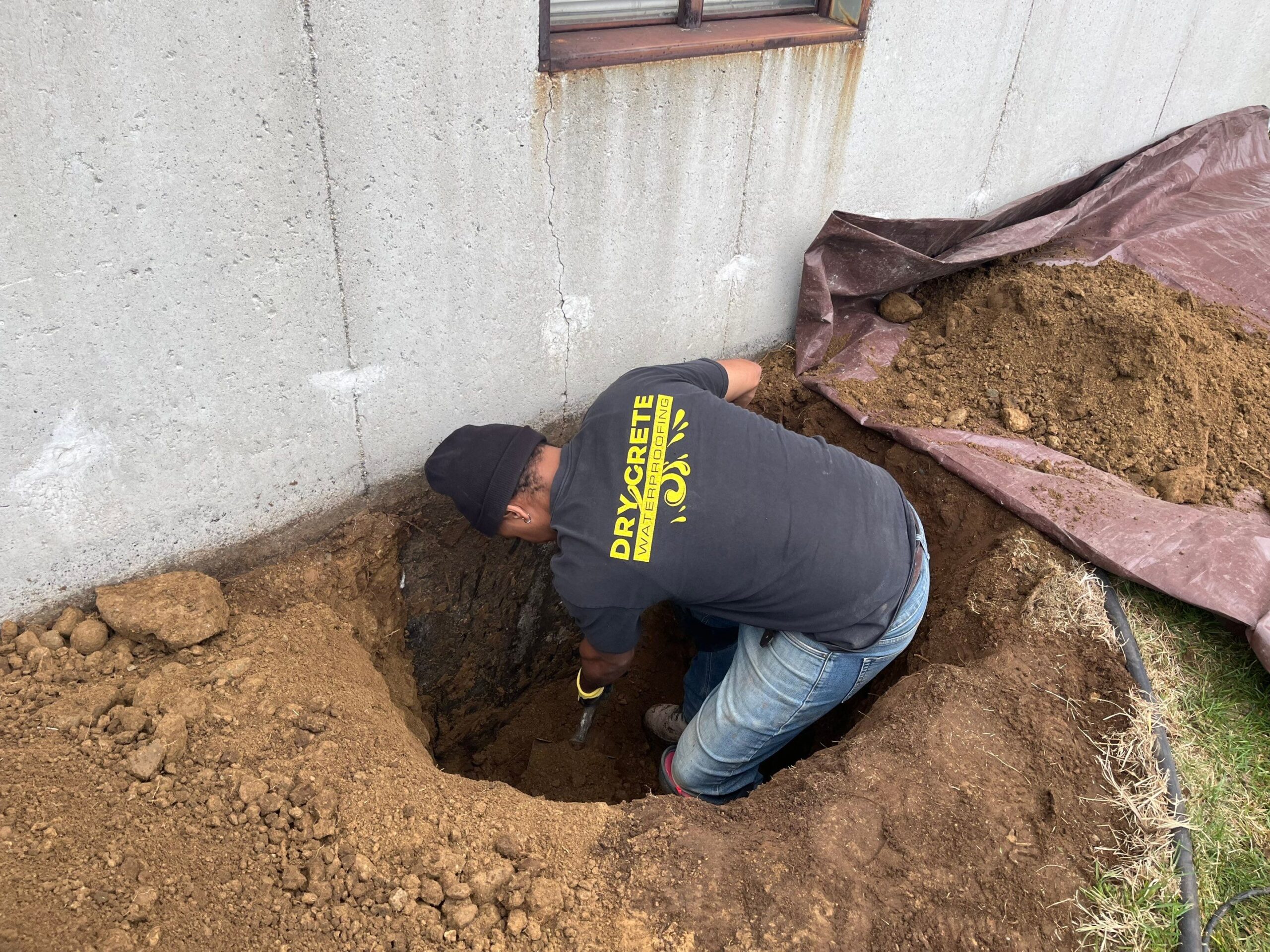
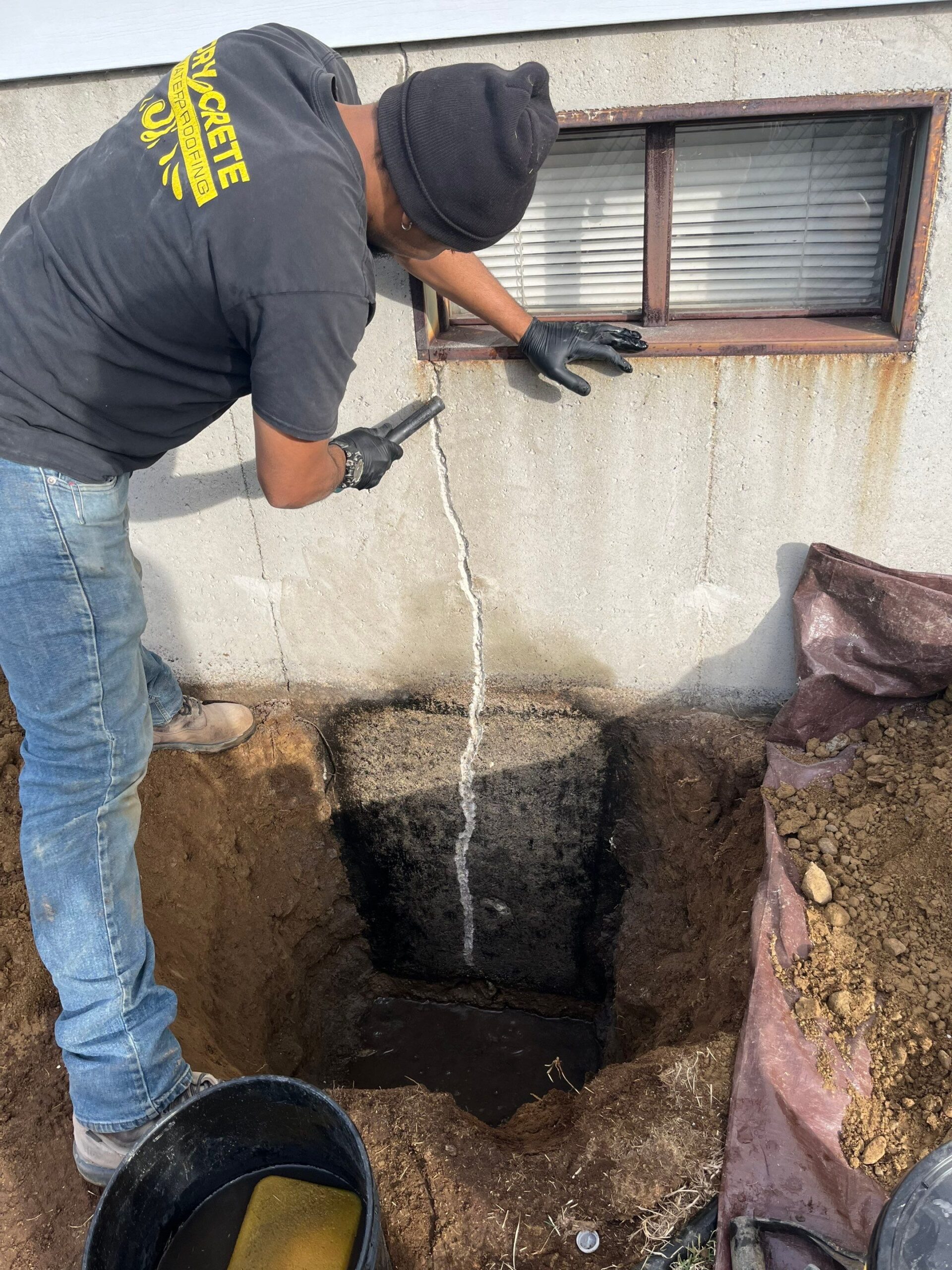
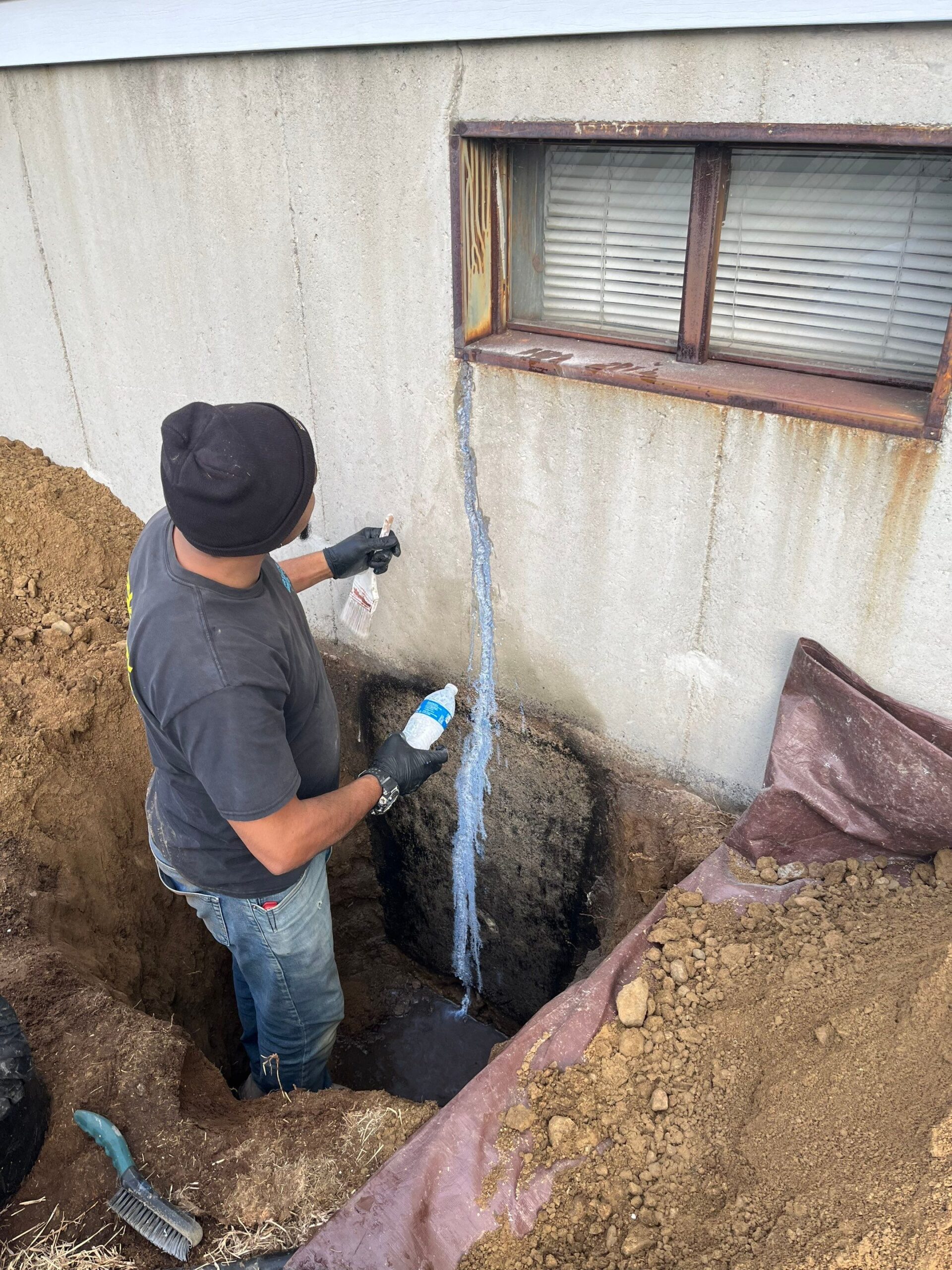
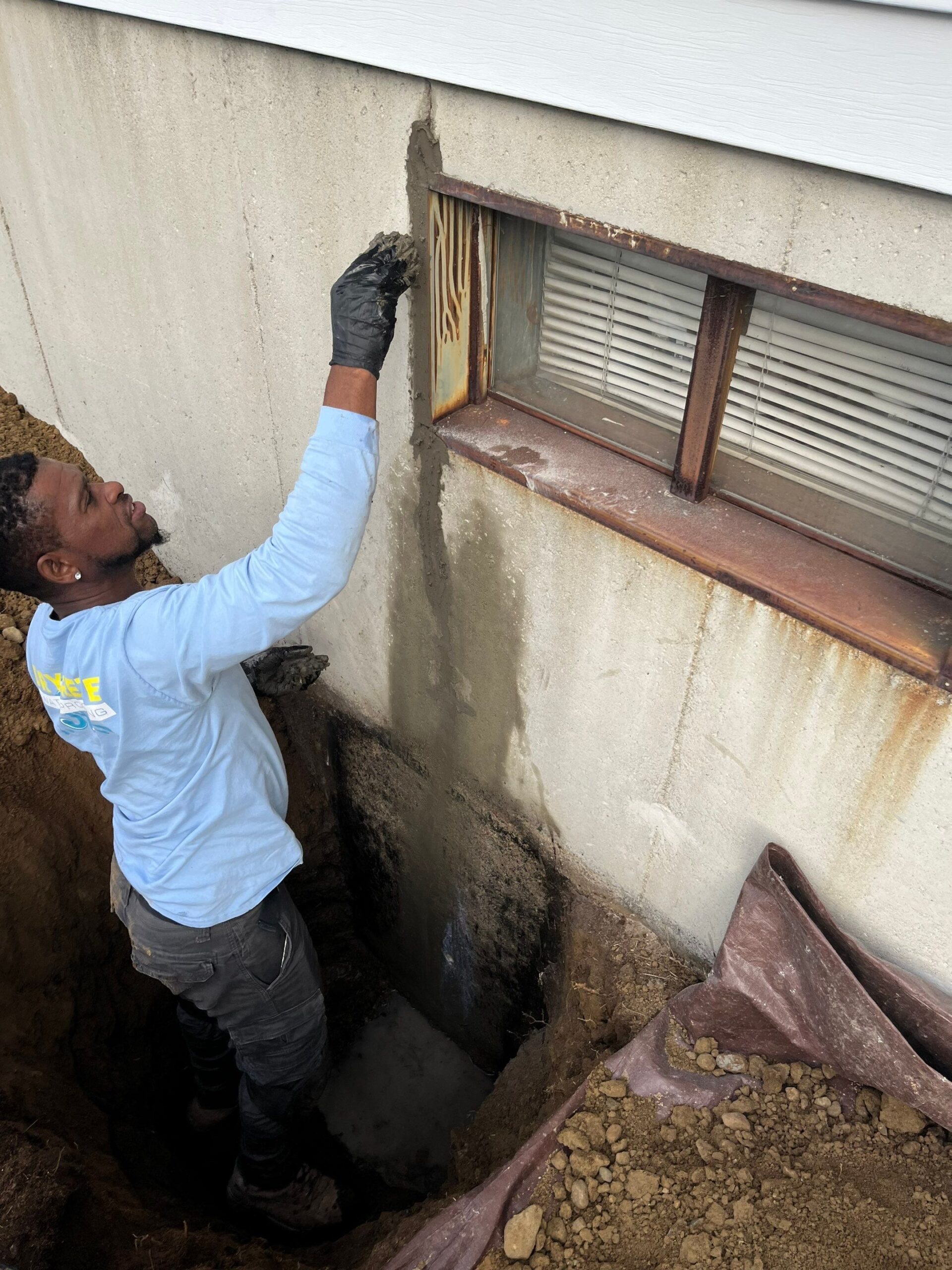
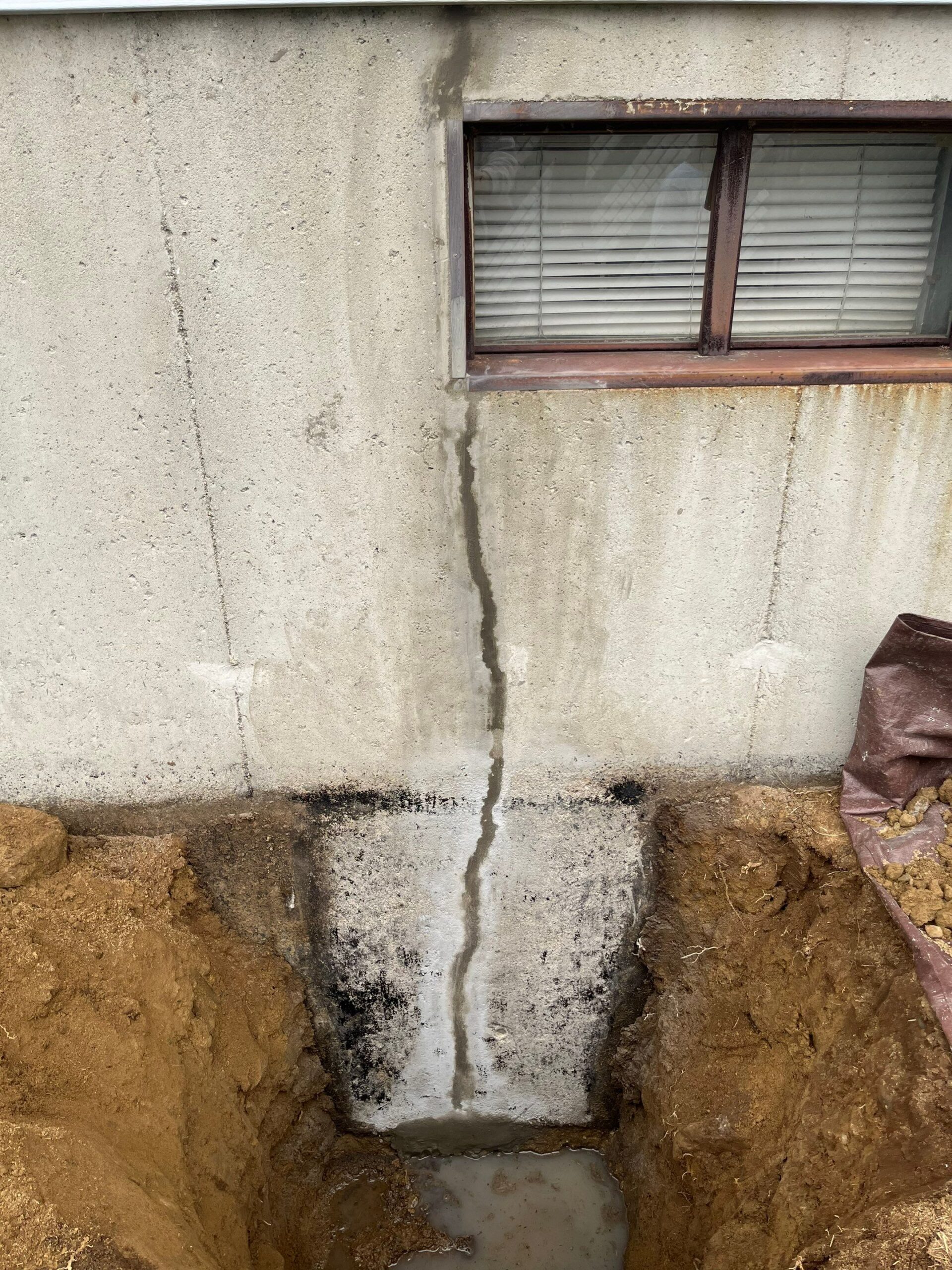
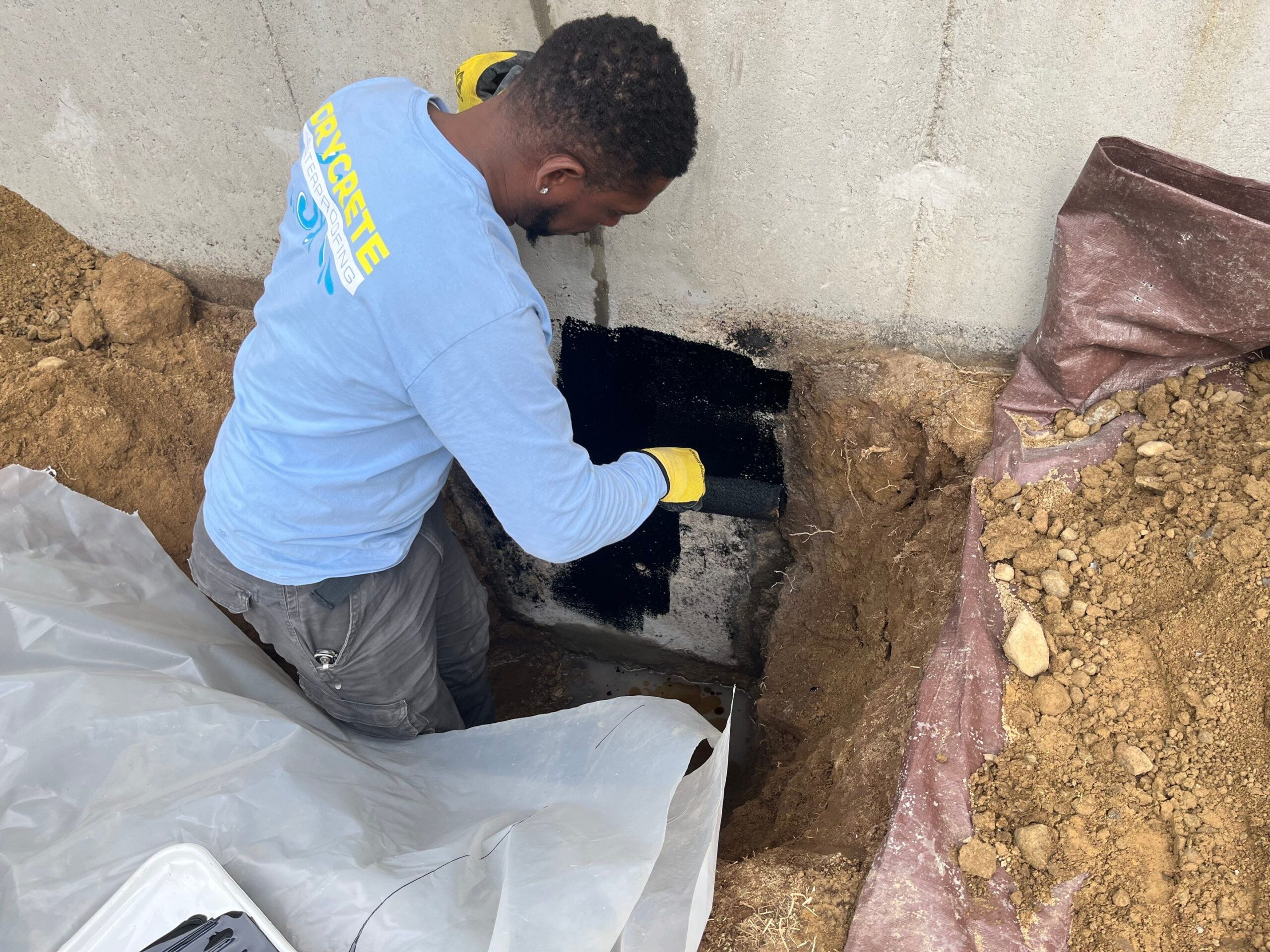
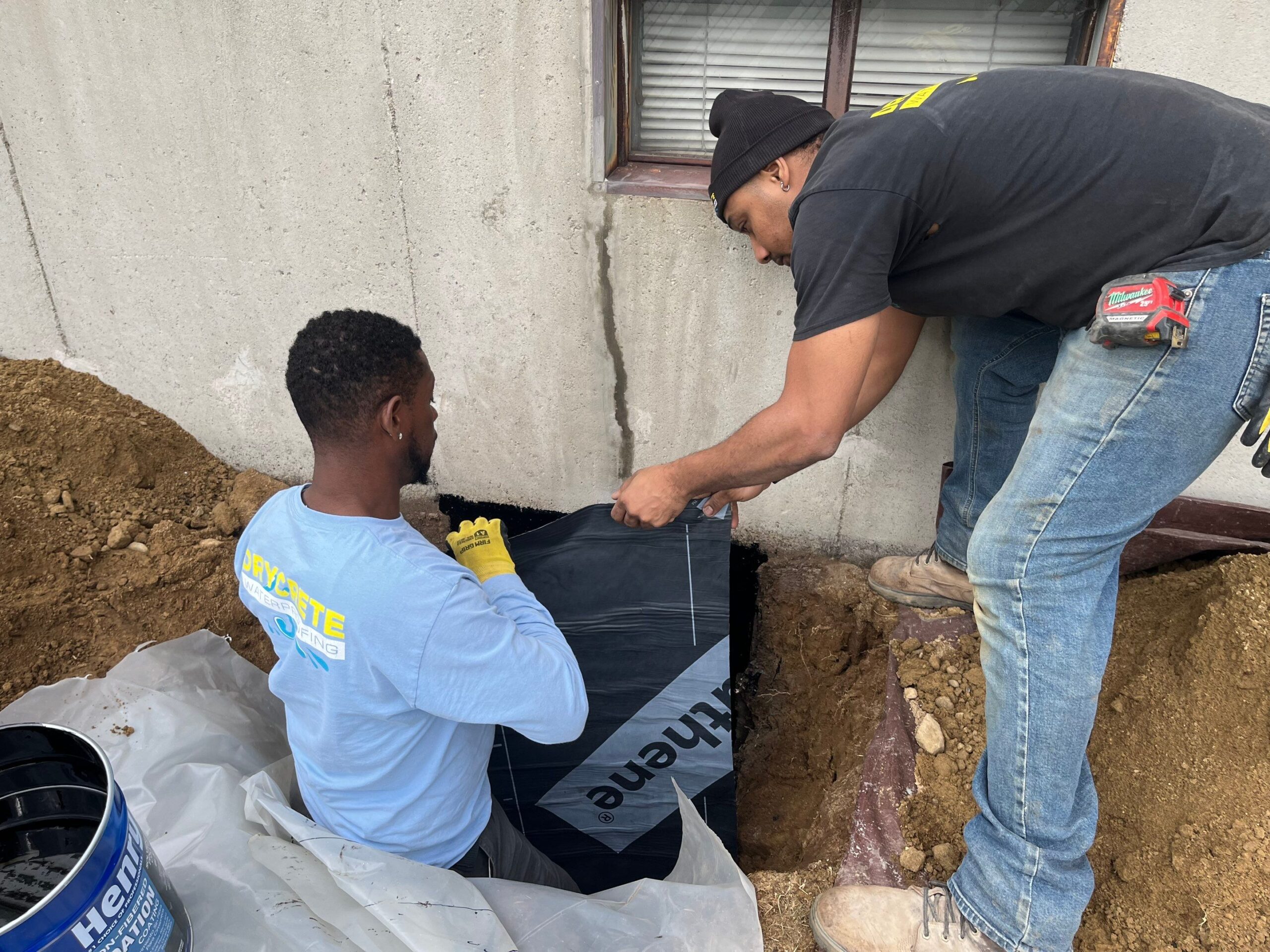
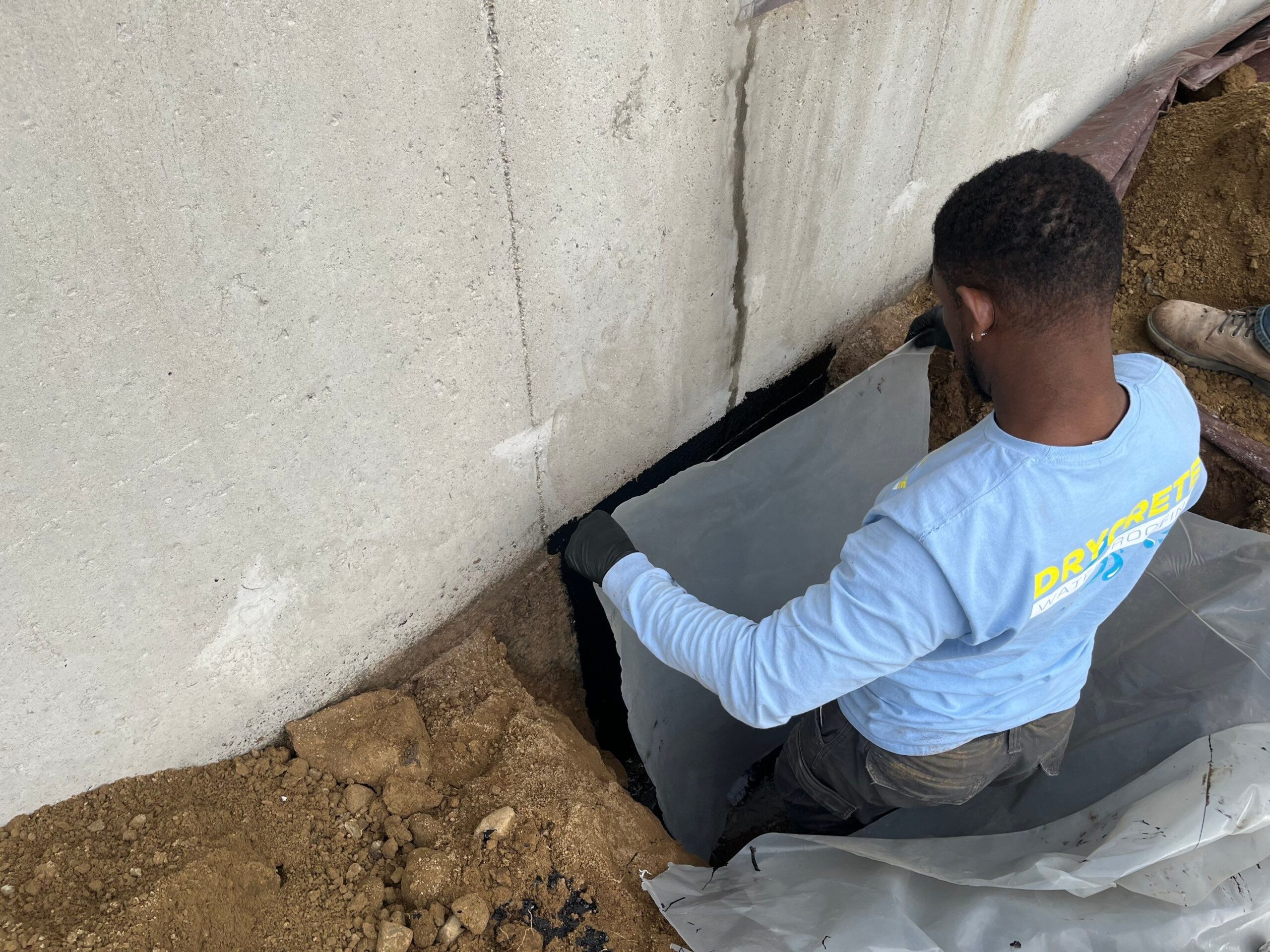
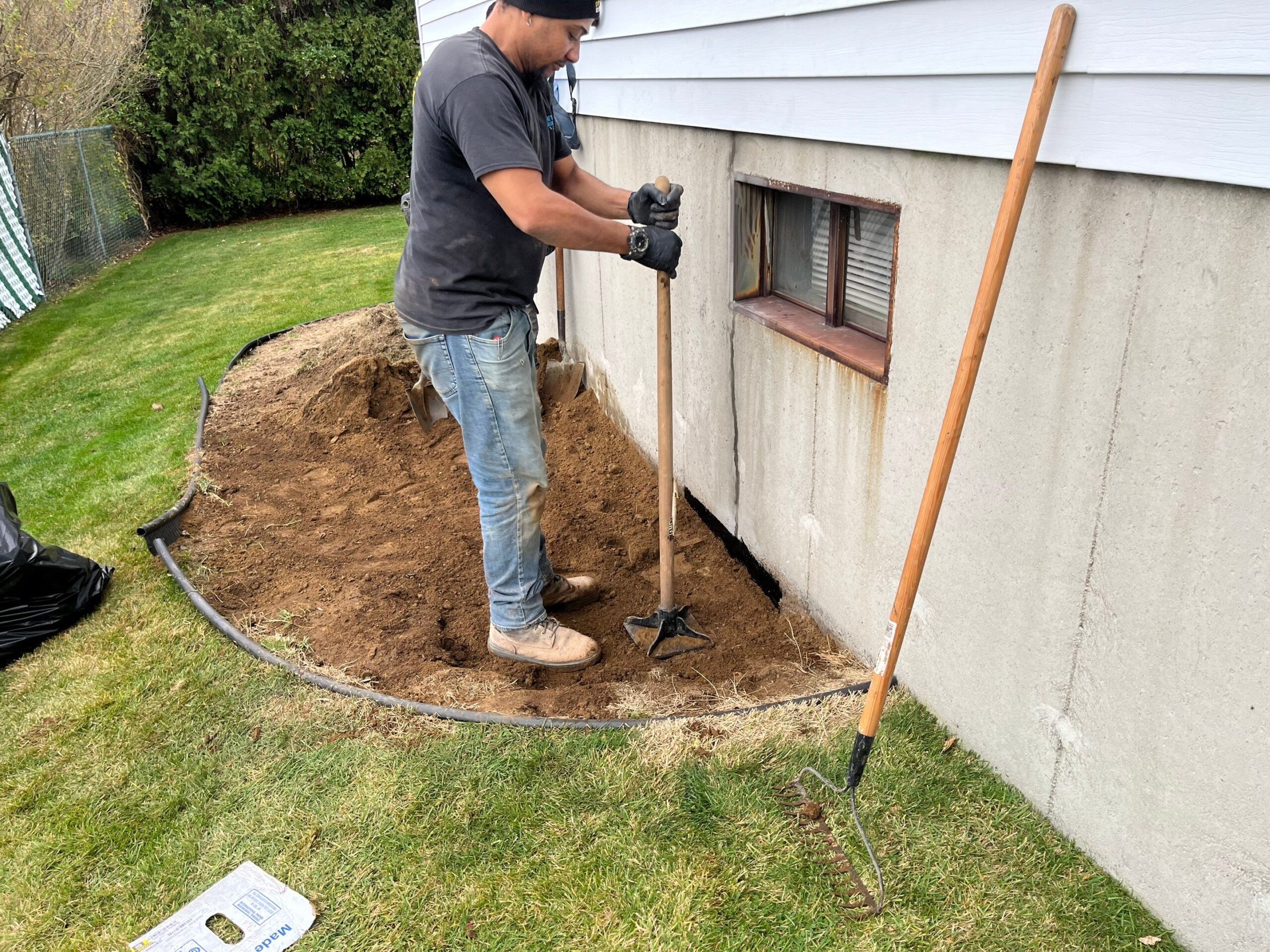
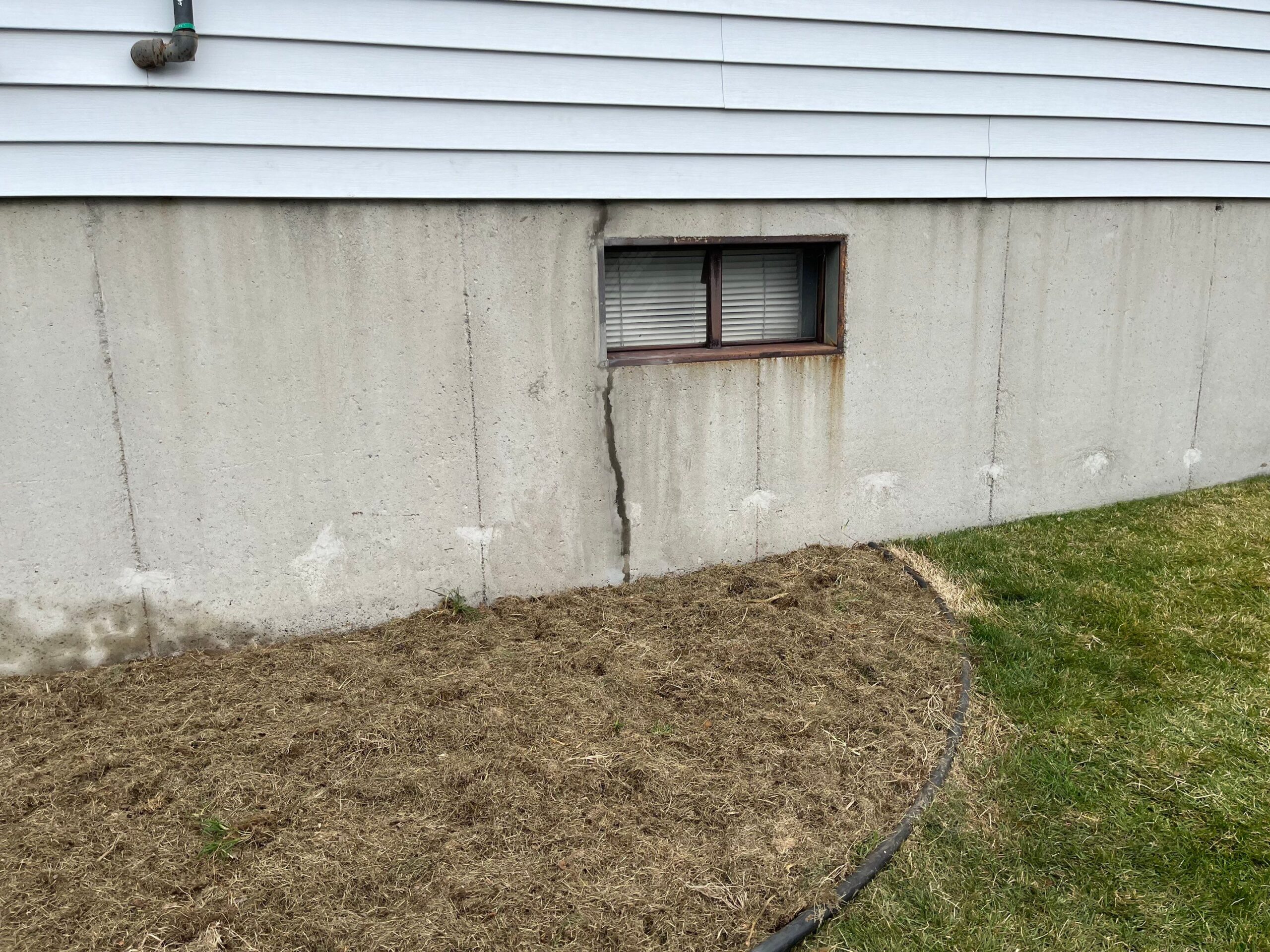
- Excavate the area next to the foundation wall crack large enough to expose the crack and provide working access.
- Scrape and wire brush the crack to create a clean working surface.
- Grind out the crack and apply hydraulic cement over the entire length.
- Apply rubberized asphalt foundation coating 12 inches wide over the crack all the way to the footing.
- Apply flexible pre-formed waterproofing membrane over the entire surface.
- Backfill with soil and tamp it down to original grade.
Advantages of Exterior Basement Crack Repair:
- Great option if you have a finished space that you don’t want to disturb.
- Easier to repair hard to reach cracks behind pipes and electrical panels or near chimneys.
Disadvantages of Exterior Crack Repair
- More invasive
- More costly (3 times more expensive or more)
- Potential disruption of landscaping
- More risk to underground utilities
How to decide if Interior Crack Repair or Exterior Crack Repair are Right for you:
If you have a foundation crack leading to a basement leak, then you will need to decide which repair method is best for your home. In most cases, interior crack repair will be a better option, saving you time and money, however, you might consider an exterior repair if:
- The crack is in a hard to reach place.
- Your foundation walls are made from cinderblock or fieldstone.
- You have a finished basement you don’t want to disturb.
- You want to keep your basement walls bare and don’t want the aesthetic of repaired cracks.
When in doubt contact a professional. If you’re not sure what the best method is for you, then get in touch with a professional basement waterproofer. Many pros in the field will offer free on-site assessments, so take advantage of their expertise and knowledge.
DIY Basement Crack Repair:
- Cost-Effective: DIY basement crack repair can be cost-effective initially, as it eliminates labor costs associated with hiring a professional.
- Immediate Action: DIY repairs allow you to address minor cracks promptly without waiting for a professional appointment.
- Basic Repairs: For small, non-structural cracks, DIY kits and sealants can provide a satisfactory solution. These kits are readily available at home improvement stores.
- Learning Experience: If you enjoy tackling home improvement projects and have some DIY skills, repairing minor cracks can be a rewarding learning experience.
Considerations:
- Skill Level: Effective DIY repair requires some knowledge of the products and techniques involved. Inadequate repairs may not prevent future issues.
- Limited to Minor Cracks: DIY methods are suitable for small, non-structural cracks. They may not be adequate for more extensive or structural damage.
- Temporary Solutions: DIY repairs are often considered temporary solutions and may not provide the long-term stability and waterproofing that professional methods offer.
Professional Basement Crack Repair:
- Expertise: Professionals have the knowledge and experience to assess the severity of the cracks and determine the most appropriate repair method.
- Structural Repairs: For significant or structural cracks, professionals can provide comprehensive solutions that address the root causes and ensure the foundation’s stability.
- Warranty: Many professional basement crack repair companies offer warranties on their work, providing peace of mind and assurance of quality.
- Waterproofing: Professionals can also integrate waterproofing measures to prevent future water infiltration, reducing the risk of mold and structural damage.
Considerations:
- Cost: Professional basement crack repair can be more expensive upfront due to labor and materials costs. However, it may offer long-term cost savings by preventing future issues.
- Time: Scheduling and completing professional repairs may take longer than a DIY fix, depending on availability and the extent of the work.
- Access to Tools and Materials: Professionals have access to specialized equipment and materials that may not be readily available to homeowners.
In Conclusion:
Basement leaks resulting from foundation cracks present two viable repair options: DIY interior basement crack repair or professional exterior basement crack repair. In many instances, the preference leans towards interior repair due to its cost-effectiveness, speed, and effectiveness. However, certain situations warrant exterior repair as the superior or sole solution.
Understanding basement cracks is crucial; while vertical basement wall cracks are often common and benign, neglecting them can lead to structural issues and extensive damage. These cracks can arise from factors like foundation settling, hydrostatic pressure, and freezing and thawing. Failing to address them can result in basement leaks, structural damage, mold growth, costly repairs, reduced property value, and even pest infestations.
DIY interior crack repair offers affordability and immediate action, suitable for small, non-structural cracks. On the other hand, professional crack repair provides expertise, structural solutions, warranties, and waterproofing, although it may be initially more costly. Choosing between the two methods depends on the specific circumstances of the crack, such as accessibility, basement type, and aesthetic preferences, often requiring professional assessment for an informed decision.
